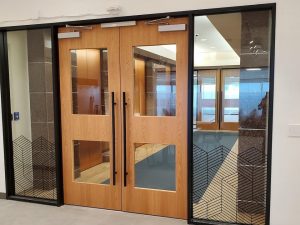If you notice water damage to the walls of your home, it’s essential to stop and repair it before the problem worsens. It can include fixing leaking roofs and pipes, improving ventilation, or using dehumidifiers. Seeing paint problems on your walls is a major red flag of a potential water intrusion issue. These problems can include blistering, efflorescence, mold, and mildew.
Structural Damage
The components in your home are susceptible to serious harm from water incursion. Blistering paint is one of the most common symptoms of water intrusion. It looks like large blisters under your painted surface and can be obtrusive to the eye. These blisters are more than likely caused by a leak in the wall underneath. Even the highest quality coating system can only withstand a certain amount of hydrostatic pressure before blisters form. It is because the paint needs to be able to ‘breathe’ so that the moisture can escape. To avoid a recurrent issue, you can find professionals from https://coloradopainting.com who can fix loose caulking and enhance building ventilation.
Blistering
Water intrusion should be a concern for building owners and tenants. While a leaking roof or pipe is prominent and should be addressed promptly, other less apparent signs of moisture intruding into the structure may be overlooked until it is too late. Blistering paint is one of the most common symptoms of water intrusion. It occurs when moisture gets behind the paint and, as it evaporates, pushes against the surface, causing bubbles in the paint. It looks like skin blisters and can happen on gloss and flat paints.
The issue might be caused by a leaky roof, holes close to where utilities enter the walls, or inadequate window caulking and flashing. It can also occur due to wind-driven rain or a combination of factors. Periodically carry out a thermal imaging examination. Thermography is an effective tool for detecting moisture by comparing temperature differences in the surface being inspected. It is an excellent risk control technique for construction projects and should be implemented before breaking ground.
Efflorescence
Many homeowners are keenly aware of common water intrusions issues like a failing foundation sump pump or a spot on the ceiling that may indicate a leaky roof. They may also watch for things like fire sprinkler systems that can cause problems when they malfunction. However, a less-noticed sign of water intrusion is the white crusty or fuzzy-looking residue known as efflorescence. It appears on flat paint surfaces and is brought on by the evaporation of water in concrete walls. You can prevent efflorescence with proper surface preparation before painting. Many surprising sources of water intrusion often go unnoticed by property owners. Routine thermography inspections can detect areas where moisture is present by examining temperature differences. It can help prevent the need for expensive water intrusion repairs down the road.
Mold & Mildew
Often, the first indicator of water damage is mold and mildew. Mold grows when nutrient-rich building materials get wet. When it does, a 24 to 48 hours window opens for the materials to dry before irreversible damages occur. It is when a rapid response can prevent serious problems. Identifying and controlling the source of the water is critical, as well as surveying impacted areas with a moisture meter and infrared camera to document the extent of the damage. It is also essential to determine in advance if construction materials affected by the water contain asbestos or other regulated material before disturbance. Putting a water intrusion prevention plan in place during pre-construction and construction can save general contractors from costly repairs. By taking the time to put this plan in place, a contractor can minimize costs from water intrusion and avoid expensive claims caused by mold and other damage to building materials.






Leave a Reply